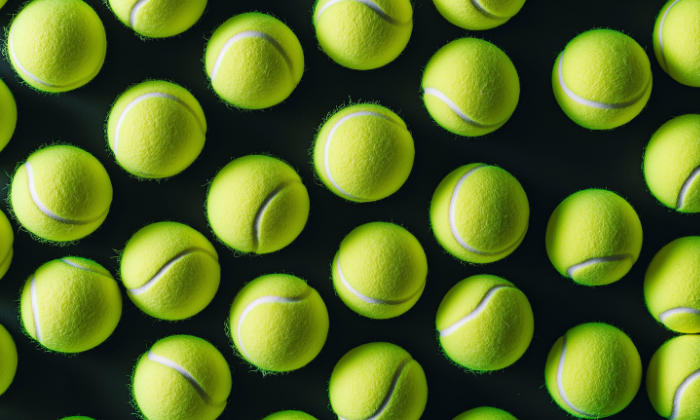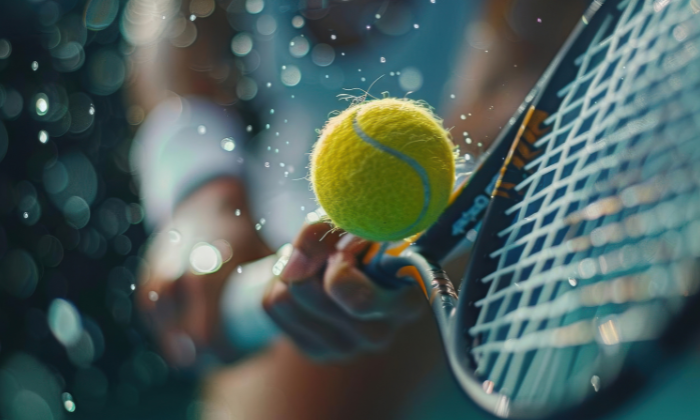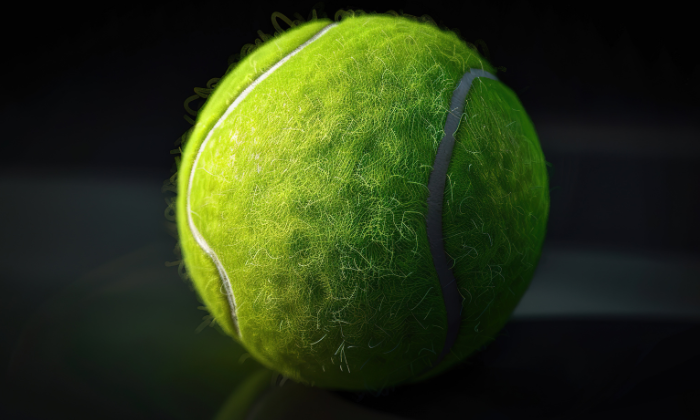
Why are tennis balls fuzzy? The fuzz on a tennis ball helps create friction, which provides better control and spin. The fuzzy material also protects the rubber core from wear and tear. This helps extend the life of each tennis ball.
That fuzzy exterior of the tennis ball plays a crucial role in the game. It’s not just for looks! It significantly affects its playability and durability!
I am Chris, a British tennis player based in London, ERSA Pro Stringer, and a fan of all things tennis. I have spent hours researching this in-depth, so you don’t have to (you’re welcome!). Seeing as you got this far, let’s jump straight in! Feel free to skip ahead to the bit that interests you!
The history of tennis balls
Why are tennis balls fuzzy? Well, to answer that, we need to go back in time.
ennis balls have come a long way since the sport’s inception, way back in medieval times in France. Did you know that tennis balls used to be wooden!?!
Crazy right? Imagine trying to hit with a wooden ball. They were heavy and had barely any bounce!
By the 16th century, innovation came, and hand-stitched leather balls were created. These were filled with hair or feathers! Believe it or not, this was a big leap forward!
It allowed for better control and playability on the court. Thankfully, the 19th century brought a new design with the introduction of a rubber core. This provided much better elasticity and bounce.
The thick fuzz we know today also began appearing around this time. This greatly improved aerodynamics and visibility. Bright yellow fuzz is hard to miss!
So, that furry yellow ball we use today is a result of centuries of experimentation! Incredible huh?
Let’s dive a little deeper into the role of felt, or as we know it, yellow fuzz!
The role of fuzz on tennis balls

The fuzz on a tennis ball is crucial for performance. It is not just for looks! It has a big impact on the playability of the ball.
Did you know that the fuzz helps with the speed and trajectory of the ball? Think about it: if the fuzz wasn’t there, the ball would fly long all the time!
The fuzz creates friction, which is what helps give you control and spin. This is important when you are executing your shot!
It isn’t just for playability, either! Wait, Chris, there is more? Yes! The felt also protects the rubber middle from wear and tear.
This helps with the durability. You wouldn’t want to replace your balls every time you hit them! I write more about durability in my article why are tennis balls pressurized.
If you play a lot on hard courts, this is really harsh on balls. The fuzz extends its life.
What about the weather? Weather you say, Chris, what on earth has that got to do with fuzz?
Well, felt absorbs moisture so it is more adaptable to different conditions. Wet or dry, this helps maintain consistent playability.
So next time you’re smashing that yellow fuzzy ball, remember it is not just aesthetics. It is all critical to how the game of tennis is played!
The guys at Science ABC delve a little further into the fuzz in the video below. Take a look!
How felt is transformed into fuzz!
The creation of tennis ball fuzz is a fascinating process! It is back to science class for you, Chemistry, to be more exact.
The fuzz begins with natural wool fibers. It has unique properties that make it ideal for tennis balls!
But how do tennis balls get that familiar fuzzy texture? This is where we go all scientific. I know, I know, geeky! Stay with me; this is the interesting part!
To do this, they undergo a rigorous felting process [1]. This involves heat, moisture, and agitation. Together, these elements make the wool fibers interlock. Fascinating huh?
But wait, what about the bright yellow color? Well, I’m glad you asked!
Once felted, the fabric is then dyed. Bright yellow, to be exact! This color ensures maximum visibility on the court.
Wait, I missed a bit! I forgot about the round shape! So, the resulting felt is cut into precise shapes before being adhered to a rubber core!
The result? A perfectly crafted fuzzy yellow ball! It has been perfectly designed for optimal performance.
Common misconceptions with fuzz!

Now we know how the felt is made, let’s debunk a few myths while we’re here:
- The fuzz is for aesthetics – This is not true! It is part of a unique design to enhance gameplay!
- All fuzzy balls are the same – There are a variety of different surfaces and felt types. These all affect ball speed and spin!
- Fuzz wears out quickly – Not true! While it does flatten over time, even worn felt provides sufficient grip on your racket and ball!
- Wool is bad for the environment – Wool is a natural fiber [2]! Dyeing the felt a different color is not, however!
The fact that there is so much debate around this illustrates how passionate tennis fans are. Who would have thought a fuzzy yellow ball would cause so much discussion?
Fun facts and trivia

Tennis Ball Fuzz has some quirky trivia that might surprise you!
- Bright yellow color – Did you know it wasn’t until 1972 [3] that tennis balls became yellow? Before that, they were white!
- The fuzz is not for looks – It affects how the ball bounces and travels through the air. Different players prefer different types of felt depending on their playing style.
- Durability – The wool felt on tennis balls can withstand a lot of wear and tear. This makes them extremely durable.
- Losing bounce – This happens as dirt and moisture clings to the felt fibers. This significantly affects the performance.
There you go! You’re ready for that next pub quiz! It’s fascinating what lies beneath this furry exterior!
Over to you!
I hope you enjoyed reading the above article and do hope you visit again! Please check below for more related posts which might be of interest to you.

1 thought on “Why Are Tennis Balls Fuzzy? Science Plays A Key Role!”